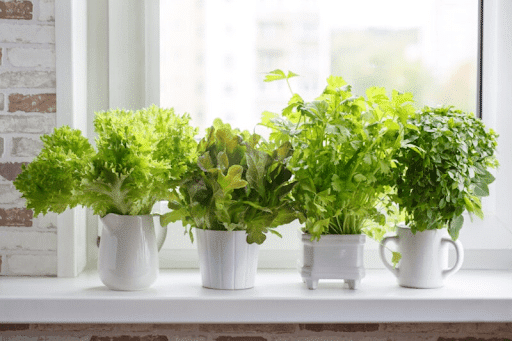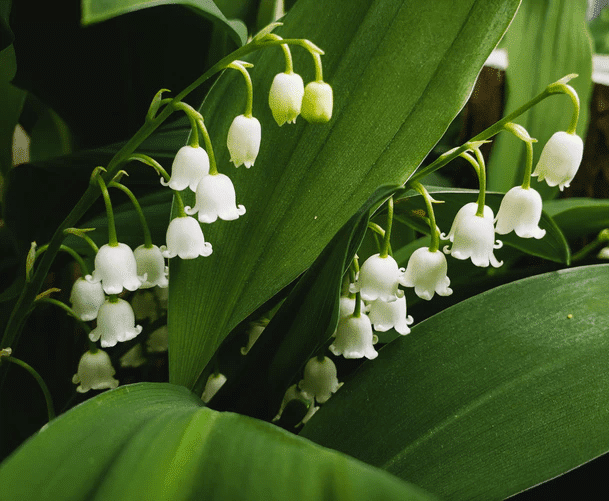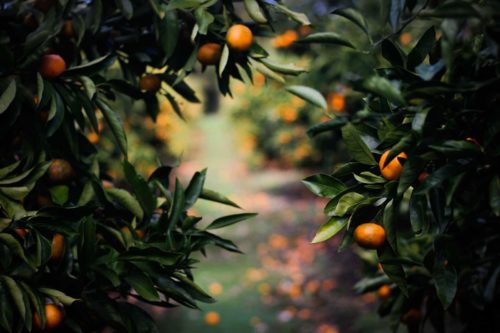10 Healthy Edible Indoor Plants to Grow At Home
Everyone loves indoor plants. They make our homes look great, improve air quality and bring a touch of the outside, in.
With edible plants, however, they add an extra benefit; food! Let’s dive into our top 10 healthy edible plants to grow indoors, so you can add a whole new dimension to your indoor plant collection.
The Best Healthy Indoor Edible Plants You Can Grow In Australia
This list was created by Australian gardeners at Amico with 25+ years of experience. So, you can be sure that these edible plants will grow faster than you can eat them.
Kidding aside, have a look at the list and enjoy.
-
Basil
Growing basil indoors in a container is easy; you just have to make sure it has well-drained, nutrient-rich soil. Basil is not that tolerant of water stress, so adequate drainage is a must, keeping the soil somewhat moist but not soggy to avoid rotting.
Basil will also require some fertilising, for which a general organic houseplant fertiliser will be fine. You can use basil for flavouring foods, and it looks great on the windowsill!
-
Spinach
Much like basil, it’s important to keep spinach consistently moist but not soggy. Water regularly, especially during dry periods, and keep the area around the plants free of weeds. Leaf miners are a natural pest associated with spinach, so always check the undersides of the leaves for them. It doesn’t take long for spinach to grow, and you can harvest it once you see five or six good leaves.
Spinach is a leafy vegetable that is a very good inclusion in your diet; just make sure you rinse the leaves before using. Mix it with lettuce in a salad, or cook it down for a nutrition boost to any meal!

From spinach to radishes, there are many indoor plants that can be a healthy addition to your meals, saving you a trip to the grocery store.
-
Cilantro
Cilantro grows best in an unglazed terracotta pot as it allows for greater moisture and air to go through the roots. Ensure plenty of drainages and make sure the soil is a mixture of potting soil and sand so water can move freely. Thorough watering is important, so water until you see it come out of the drainage holes.
You only need to water when the soil is dry to the touch, usually more often in the summer months. Cilantro also needs the full sun when growing indoors for four to five hours of sunlight per day.
-
Ginger
Ginger plants often take around ten months to mature. Select a spot that offers part to full shade and ensure the root lives in rich, loose soil. It’s a good idea to add lots of compost, and it’s ok to grow ginger in containers, as long as you are using potting soil.
-
Rosemary
Growing rosemary indoors is tricky. To ensure success, be aware of and avoid the top three things that kill rosemary plants indoors. These are:
- A lack of sunlight
- Poor watering practices
- Powdery mildew pests
If you can avoid these issues, you should have a flourishing rosemary plant inside.

Add a touch of rosemary to your home and enjoy a great look, stunning scent and of course, a wonderful garnish to your meal.
-
Tomatoes
Tomatoes are warm-season veggies that have a plant that dies back in cold temperatures. So, no home-grown tomatoes in winter, however tomatoes do thrive indoors. They don’t even need a very big pot! There is nothing quite as fresh and sweet as a homegrown tomato!
-
Mandarin Oranges
You can grow mandarin oranges in a container, but it needs to be three times bigger than the seedling’s root ball. Ensure well-draining potting mix with compost and always avoid the bottom of the plant is too wet (once again, drainage is the key).
-
Meyer lemon
Growing Meyer lemons requires patience, as fruit production takes around two years. However, they offer very attractively, evergreen foliage with fragrant flowers, so the fruit is a bonus. Meyer lemons are best in large containers and away from freezing temperatures.
-
Lettuce
Lettuce will grow well indoors all winter long. It does, however, depend upon available sunlight, which is why it is best on a windowsill or beneath some grow lights if possible.

Lettuce, along with other edible plants can grow indoors as long as they are placed on a windowsill and direct from the sunlight.
-
Bok choy
Finally, we end with one of our favourites, bok choy. Select a container that is at least 8 to 10 inches wide with sufficient drainage holes, and make sure it is two-thirds full with well-draining soil. Plant a bok choy seed 1/2-inch deep and make sure it gets eight hours of sunlight per day.
How Amico can Help You Take Care of Your Edible Plants Indoor
Amico is Sydney’s gardening expert and that means your indoor garden as well. If you need a little help getting started, or even a hand bringing your plants back to life, give us a call. From a garnish to a side salad, we’ll help get your edible plants healthy.
Frequently Asked Questions
Have some more questions about your edible garden? Check our helpful FAQ section:
What is the most popular edible plant?
The most popular indoor plant is quite subjective. For some it’s microgreens, and for others, it’s citrus trees. Essentially it comes down to what grows best in your space, and it can often take a few goes to figure this out.
What does it mean for a plant to be edible?
An edible plan can safely be eaten by humans. There are many indoor plants that look great as a decoration, but have the bonus of being a healthy addition to a meal. Save yourself some grocery money and grow your own food!
What are the benefits of growing edible plants indoors?
Along with a nice green addition to your home that is also purifying your air, you can cut the grocery list down with a range of healthy food options that you have grown yourself. The supermarket becomes your home with a range of edible indoor plants.
What’s the easiest edible plant to grow in Australia?
You’ll be surprised how many indoor plants can be easy to grow all year round in Australia. The amount of sunlight in your home will also be a significant factor. Once you find the right plants for your environment, only a little care will be required to ensure they flourish. Nonetheless, if you are just starting out, we suggest planting greens
































































